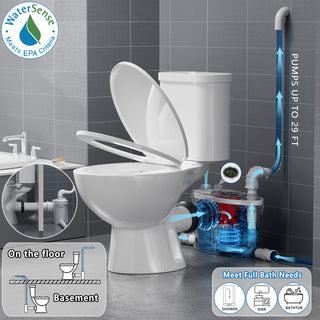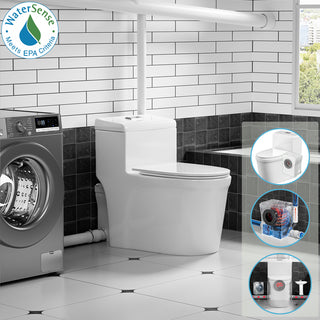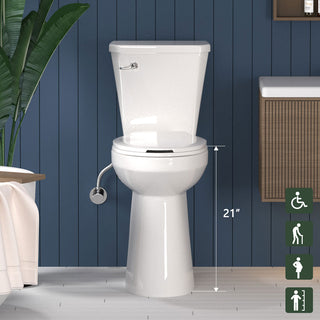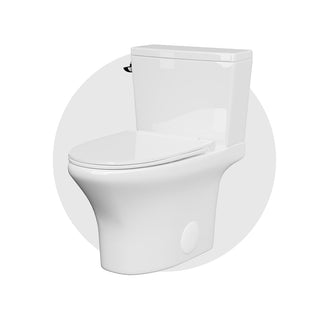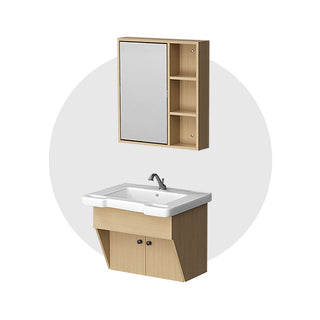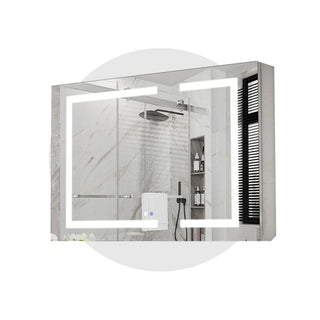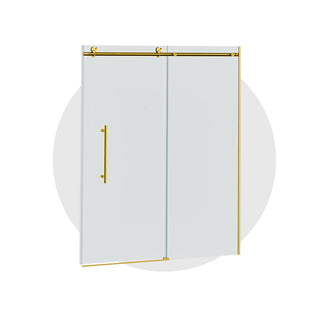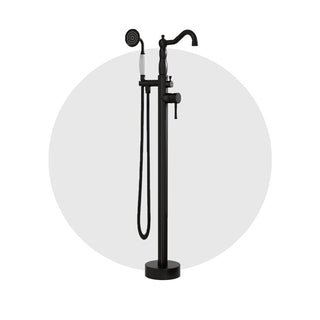There are two basic plumbing trap configurations behind toilet bowls: the S-Trap and the P-Trap. While both serve the purpose of waste removal and odor prevention, they differ in how their pipes are shaped and how they connect to the drainage system.
This article will provide a simple explanation of the plumbing structure and working principle of S-Trap and P-Trap toilet bowls, helping you identify which type fits your bathroom setup.
What is an S-Trap Bowl?
An S-Trap toilet bowl features a built-in waste outlet that directs wastewater downward into the floor drain. The internal trapway of the toilet has a shape that resembles the letter "S", which is where the name comes from.
🔍 Key characteristics of S-Trap plumbing:
- The outlet pipe exits vertically downward through the floor.
- Most commonly found in homes with floor drainage systems, typically with a rough-in distance of 12 inches from the finished wall to the center of the floor flange.
- Uses siphoning action during flushing to create strong waste removal, and a refill mechanism restores the water seal to prevent sewer gases from escaping.
What is a P-Trap Bowl?
A P-Trap toilet bowl has a waste outlet that directs wastewater horizontally into a wall drain. Its internal trapway shape looks like the letter "P", which gives it its name.
🔍 Key characteristics of P-Trap Toilets:
- The outlet pipe exits horizontally through the wall behind the toilet.
- Most commonly found in homes with wall drainage systems, where the toilet’s outlet height must align with—or sit slightly above—the wall drain inlet to ensure smooth waste flow.
- The “P” shaped curve naturally holds a more stable water seal, effectively blocking sewer gases.
- It also supports more flexible installation options, including:
- Connection via extension pipes to nearby wall plumbing;
- Integration with macerating pumps for upflush systems—ideal for basements or areas without direct access to main drainage lines;
- Pairing with concealed in-wall tanks and carrier frames for wall-mounted toilets to save space and create a modern look.
Key Differences Between S-Trap and P-Trap Toilet Bowl
For a detailed comparison of the advantages, disadvantages, and installation considerations of S-Trap and P-Trap toilets, please check our dedicated article:
[Pros and Cons of S-Trap vs P-Trap Toilets]
Conclusion
Understanding whether your toilet uses an S-Trap or P-Trap plumbing configuration helps ensure you select the right toilet bowl and avoid costly installation issues. The main difference lies in the outlet direction: S-Trap toilets drain vertically through the floor, while P-Trap toilets drain horizontally through the wall.
Before replacing or installing a toilet, identify your existing drain type and measure accordingly. Matching the toilet design with your plumbing setup prevents leaks, odors, and installation difficulties. When in doubt, consult a professional plumber for advice tailored to your bathroom.


